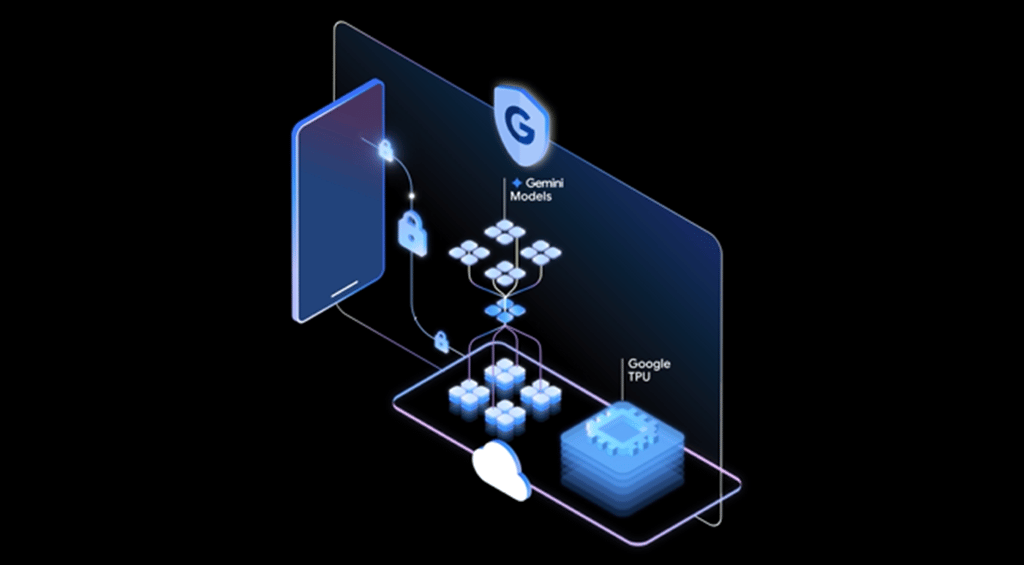Cloud machine learning platforms, sometimes referred to as machine learning as a service (MLaaS) solutions, can help make artificial intelligence (AI) affordable. But experts say enterprises and small businesses considering these services should also consider the potential challenges of these services before rushing in.
Machine learning (ML), the branch of artificial intelligence concerned with creating computer systems that can learn without being explicitly programmed, is experiencing an undeniable boom. In its Technology, Media and Telecommunications Predictions, 2018, Deloitte Global wrote, “In 2018, large and medium-sized enterprises will intensify their use of machine learning. The number of implementations and pilot projects using the technology will double compared with 2017, and they will have doubled again by 2020.”
Cloud Storage and Backup Benefits
Protecting your company’s data is critical. Cloud storage with automated backup is scalable, flexible and provides peace of mind. Cobalt Iron’s enterprise-grade backup and recovery solution is known for its hands-free automation and reliability, at a lower cost. Cloud backup that just works.
SCHEDULE FREE CONSULT/DEMO
Similarly, in its latest forecast, IDC predicted that spending on cognitive and artificial intelligence systems, which includes ML solutions, will experience a compound annual growth rate (CAGR) of 50.1 percent through 2021, when the market will be worth $57.6 billion.
David Schubmehl, research director, Cognitive/Artificial Intelligence Systems at IDC, stated, “Organizations are undertaking projects developing the next generation of intelligent applications based on the use of machine learning and deep learning along with other cognitive/AI technologies. We expect this to be a rapidly expanding area for both enterprise and commercial development as organizations race to embed predictive and prescriptive capabilities into their applications portfolio.”
In addition, according to a recent survey by Evans Data Corp, 6.5 million developers are currently using some form of artificial intelligence or machine learning, and another 5.8 million plan to start using AI or ML within six months. Given that there are more than 22 million developers worldwide, that means a majority (around 56 percent) are either using these technologies already or will do so soon.
And much of that AI and ML development is taking place in the cloud. In a follow-up email conversation, Evans Data added, “Of those developers who are working with AI or ML, 59 percent use a cloud-based backend for their AI or ML development. Thus we would estimate that approximately 3.8 million developers are doing this.”
So what kinds of applications are developers building with cloud machine learning tools? And why are some choosing cloud-based tools over other types of software?
Cloud Machine Learning Use Cases
The use cases for cloud-based machine learning are very similar to the use cases for other types of machine learning. In general, MLaaS platforms are a good fit for applications that need to analyze large quantities of data. And if that data is already stored in the cloud, an MLaaS platform might be even more attractive.
For example, IDC has said that the retail and financial services industries will be among the biggest early adopters of ML technologies. For both of these types of companies, fraud detection is a critical issue. And if their transaction data already resides in a public cloud, it would make sense to use an MLaaS platform offered by the same vendor. For retail companies doing business online, recommendation engines based on cloud machine learning platforms might help increase sales. Other good use cases for cloud machine learning might include business intelligence, risk analytics, IT security and financial trading.
On the other hand, applications where the data resides at the edge of the network might not be a good candidate for cloud machine learning. The most obvious example is autonomous vehicles. It wouldn’t make sense for a self-driving car to take the time to transfer data to the cloud for analysis and then back again before making driving decisions.
Similarly, Internet of Things (IoT) and healthcare diagnostics might not be the best candidates for cloud-based machine learning because they might also require extensive data transfers. But then again, experts say that in some cases, the cloud might still make sense. In general, they advise choosing an ML platform after carefully weighing the advantages and disadvantages of the available options.
Benefits of the Cloud-Based Machine Learning
One of the biggest advantages of cloud machine learning over other types of ML solutions is that it gives organizations access to high-performance infrastructure that they might not be able to afford on their own. ML applications require a lot of processing power, and the systems that provide that level of power have traditionally been very expensive. Today, many organizations use systems that rely on graphics processing units (GPUs) to handle ML workloads, and it is generally much more affordable to rent access to these systems in the cloud than to purchase them outright.
However, it’s worth noting that ML-capable infrastructure is likely to become much more affordable in the near future. The Deloitte report points to the development of new types of chips that could “make machine learning 10, 100 or 1,000 times less expensive.”
Another cost-related benefit of cloud machine learning is the easy access to affordable data storage. As data volumes continue to grow, many enterprises are finding that moving cold data to public cloud systems is less expensive than continuing to house it in their own data centers. If the data is already stored in a public cloud, it often makes sense to also use a cloud-based ML service. Transferring large quantities of data from one place to another can take a lot of time and add a lot of expense to a project. But if an organization can easily apply ML tools to cloud data without moving it, that can be a powerful reason to use an MLaaS.
The final major benefit of cloud-based machine learning is that the development tools provided by MLaaSes or other ML automation vendors can simplify the process of embedding machine learning in applications. Competition for application developers and data scientists with machine learning expertise is fierce, and that’s driving up salaries. Many organizations cannot afford — or cannot even find — staff to create and use ML applications.
MLaaS offerings hold out the promise of enabling “citizen data scientists,” business professionals without coding expertise or advanced degrees, to use machine learning. For example, Google very recently announced AutoML, which it said would “make AI accessible to every business.”
And many machine learning vendors are saying that their customers are able to get cloud-based ML solutions quickly. “Deploying machine learning at scale can be a complex process,” acknowledged Greg Michaelson, VP and General Manager of Banking at machine learning vendor DataRobot. “But the combination of cloud services like AWS and automated machine learning empowers organizations to get up and running in minutes. This enables their teams to quickly build world-class predictive models to gain critical insights from their data.”
Challenges of Cloud-Based Machine Learning
Despite the many benefits of cloud machine learning platforms, organizations are still going to have to overcome some challenges in order to use them. The biggest of those challenges is a lack of skilled staff.
In its AutoML announcement, Google noted,
Currently, only a handful of businesses in the world have access to the talent and budgets needed to fully appreciate the advancements of ML and AI. There’s a very limited number of people that can create advanced machine learning models. And if you’re one of the companies that has access to ML/AI engineers, you still have to manage the time-intensive and complicated process of building your own custom ML model. While Google has offered pre-trained machine learning models via APIs that perform specific tasks, there’s still a long road ahead if we want to bring AI to everyone.
And while MLaaS platforms make machine learning easier, they still don’t make it easy.
Bradford Cross, a founding partner at AI venture capital fund DCVC, has blogged that MLaaS offerings will fail because “the people that know what they’re doing just use open source, and the people that don’t will not get anything to work, ever, even with APIs.”
Time will tell if cloud machine learning offerings are able to realize their goal of democratizing ML, but they certainly face a difficult challenge.
Another big problem with cloud machine learning platforms is one that is common to all public clouds: vendor lock-in. Organizations worry that if they start using too many services from a single vendor, it will become too difficult to switch to another provider. And that in turn, could leave them vulnerable to price increases from the cloud service providers.
Integrating data from disparate data sources can also pose hurdles. Many machine learning projects rely on data that comes from a lot of different places. Collecting that data and transforming it so that is usable can be a difficult task, whether you are using a cloud machine learning platform or another type of ML solution.
That brings up another challenge that is common to all ML projects — dirty data. When Kaggle surveyed data science workers about their biggest barriers, the number one response, chosen by 49.4 percent of those surveyed, was dirty data. The greatest ML tools in the world aren’t going to be effective if they are relying on bad information, and getting data into a usable state continues to consume a lot of time and energy for data science professionals.
Alternatives to Cloud Machine Learning
Organizations have a lot of other alternatives to MLaaS platforms. As already mentioned, many professional data scientists choose to use open source machine learning tools, such as TensorFlow, Apache Spark’s MLlib or Caffe. In addition, many enterprises choose to purchase predictive analytics and machine learning solutions from vendors like Alpine Data, Dataiku, DataRobot, Domino Data Lab, FICO, H2O.ai, RapidMiner, SAS and Statistica. Much of this software, whether proprietary or open source, can be deployed either on premises or in the cloud.
Also, many other types of enterprise software are gaining machine learning capabilities. Some organizations find that the business intelligence, CRM, marketing intelligence, security intelligence, ecommerce or other types of solutions they already use or are considering purchasing have the ML capabilities they need. As a result, some organizations may not need to build any ML applications of their own.
Popular Cloud Machine Learning Services
Even with all those alternatives, cloud machine learning platforms look likely to increase in popularity as organizations increase their use of ML. The chart below offers an overview of some of the best-known cloud machine learning tools:
|
Vendor
|
Service
|
Description
|
|
Amazon Web Services
|
Amazon Machine Learning
|
Developer tools and APIs for creating ML models and obtaining predictions
|
|
|
Amazon SageMaker
|
Fully-managed service for building, training and deploying ML models at scale
|
|
|
AWS Deep Learning AMIs
|
Pre-configured instances featuring deep learning frameworks like MXNet, Gluon, TensorFlow, Microsoft Cognitive Toolkit, Caffe, Caffe2, Theano, Torch, Pytorch, and Keras
|
|
Microsoft Azure
|
Machine Learning Services
|
Developer tools for creating ML models and applications
|
|
|
Azure Machine Learning Studio
|
A serverless, drag-and-drop environment for building ML applications.
|
|
Google Cloud Platform
|
Cloud Machine Learning Engine
|
A managed service for building ML models based on TensorFlow
|
|
|
Cloud AutoML
|
A suite of tools to help less-experienced developers create and train ML models (alpha)
|
|
IBM Cloud
|
Watson Machine Learning
|
Developer tools for creating models and running automated experiments based on open source tools and the Watson engine
|
|
SAP
|
SAP Leonardo
|
Developer tools for building AI and ML applications that run on the SAP Cloud Platform
|
|
Oracle Cloud
|
Oracle Cloud AI Platform
|
Pre-configured instances and tools for building ML models (coming soon)
|
|
Salesforce
|
myEinstein
|
Developer tools for creating AI and ML apps that use Salesforce data
|
|
Adobe
|
Adobe Sensei
|
AI and ML services for developers (coming soon)
|
-
Huawei’s AI Update: Things Are Moving Faster Than We Think
FEATURE | By Rob Enderle,
December 04, 2020
-
Keeping Machine Learning Algorithms Honest in the ‘Ethics-First’ Era
ARTIFICIAL INTELLIGENCE | By Guest Author,
November 18, 2020
-
Key Trends in Chatbots and RPA
FEATURE | By Guest Author,
November 10, 2020
-
Top 10 AIOps Companies
FEATURE | By Samuel Greengard,
November 05, 2020
-
What is Text Analysis?
ARTIFICIAL INTELLIGENCE | By Guest Author,
November 02, 2020
-
How Intel’s Work With Autonomous Cars Could Redefine General Purpose AI
ARTIFICIAL INTELLIGENCE | By Rob Enderle,
October 29, 2020
-
Dell Technologies World: Weaving Together Human And Machine Interaction For AI And Robotics
ARTIFICIAL INTELLIGENCE | By Rob Enderle,
October 23, 2020
-
The Super Moderator, or How IBM Project Debater Could Save Social Media
FEATURE | By Rob Enderle,
October 16, 2020
-
Top 10 Chatbot Platforms
FEATURE | By Cynthia Harvey,
October 07, 2020
-
Finding a Career Path in AI
ARTIFICIAL INTELLIGENCE | By Guest Author,
October 05, 2020
-
CIOs Discuss the Promise of AI and Data Science
FEATURE | By Guest Author,
September 25, 2020
-
Microsoft Is Building An AI Product That Could Predict The Future
FEATURE | By Rob Enderle,
September 25, 2020
-
Top 10 Machine Learning Companies 2020
FEATURE | By Cynthia Harvey,
September 22, 2020
-
NVIDIA and ARM: Massively Changing The AI Landscape
ARTIFICIAL INTELLIGENCE | By Rob Enderle,
September 18, 2020
-
Continuous Intelligence: Expert Discussion [Video and Podcast]
ARTIFICIAL INTELLIGENCE | By James Maguire,
September 14, 2020
-
Artificial Intelligence: Governance and Ethics [Video]
ARTIFICIAL INTELLIGENCE | By James Maguire,
September 13, 2020
-
IBM Watson At The US Open: Showcasing The Power Of A Mature Enterprise-Class AI
FEATURE | By Rob Enderle,
September 11, 2020
-
Artificial Intelligence: Perception vs. Reality
FEATURE | By James Maguire,
September 09, 2020
-
Anticipating The Coming Wave Of AI Enhanced PCs
FEATURE | By Rob Enderle,
September 05, 2020
-
The Critical Nature Of IBM’s NLP (Natural Language Processing) Effort
ARTIFICIAL INTELLIGENCE | By Rob Enderle,
August 14, 2020
SEE ALL
CLOUD ARTICLES







